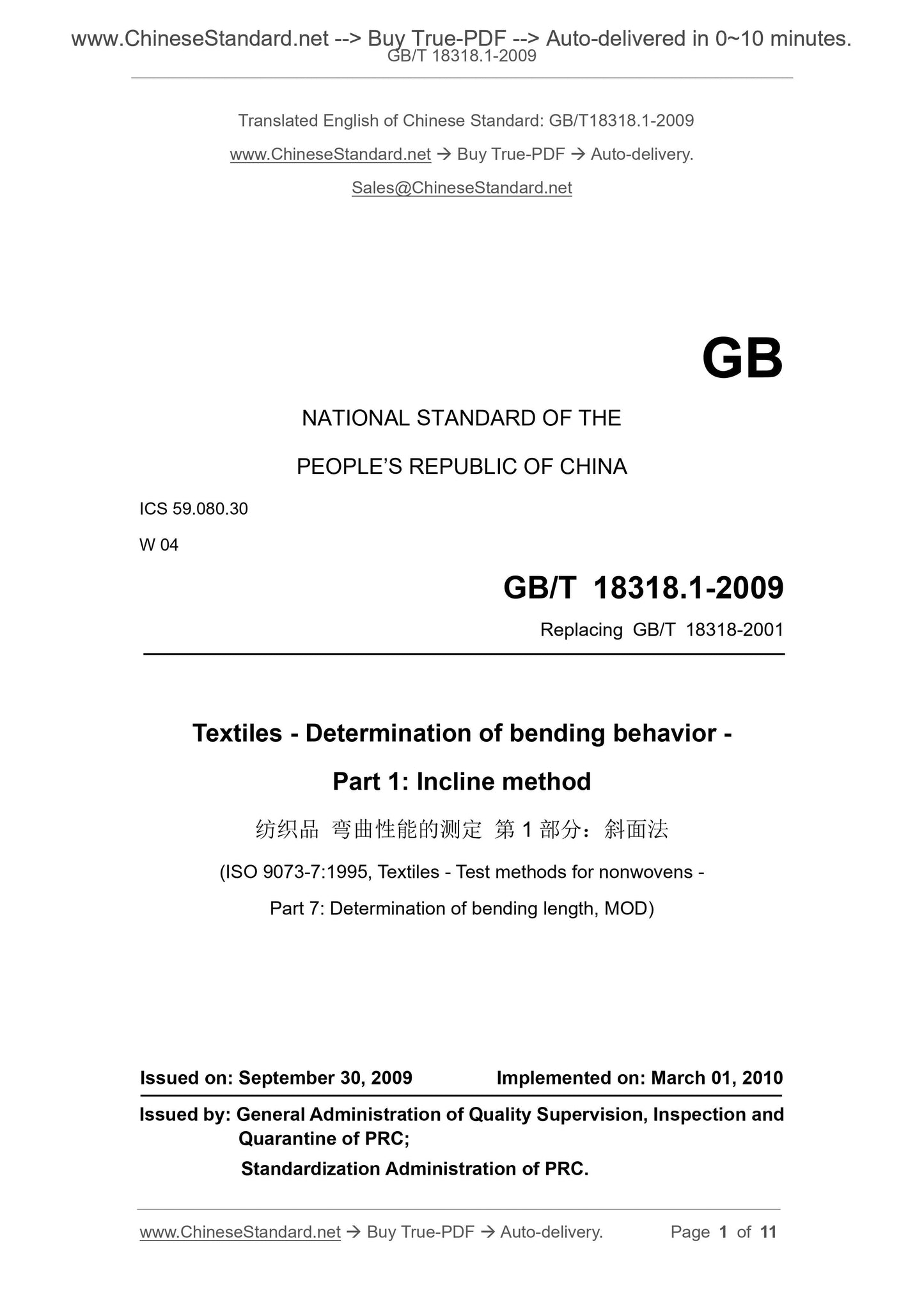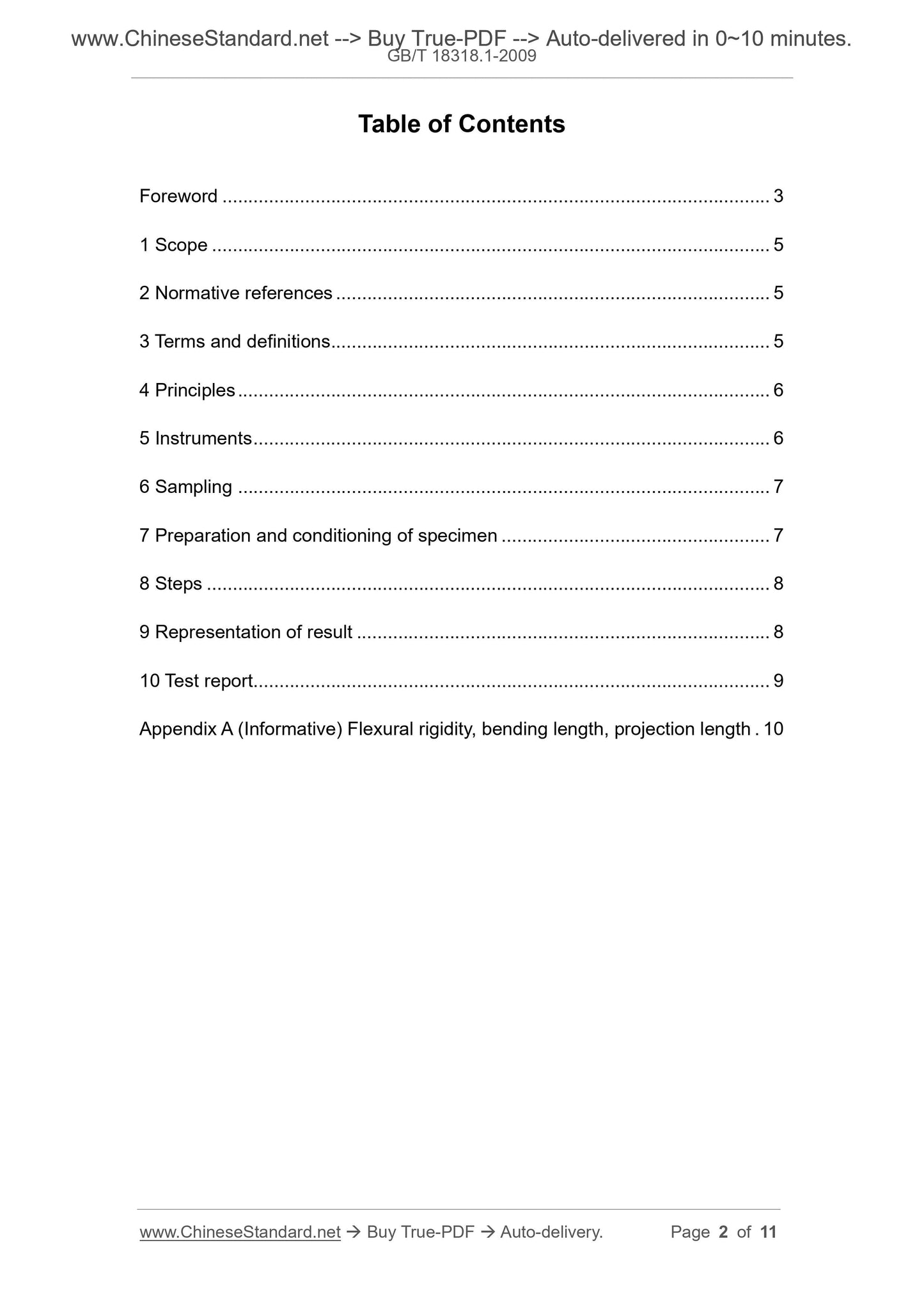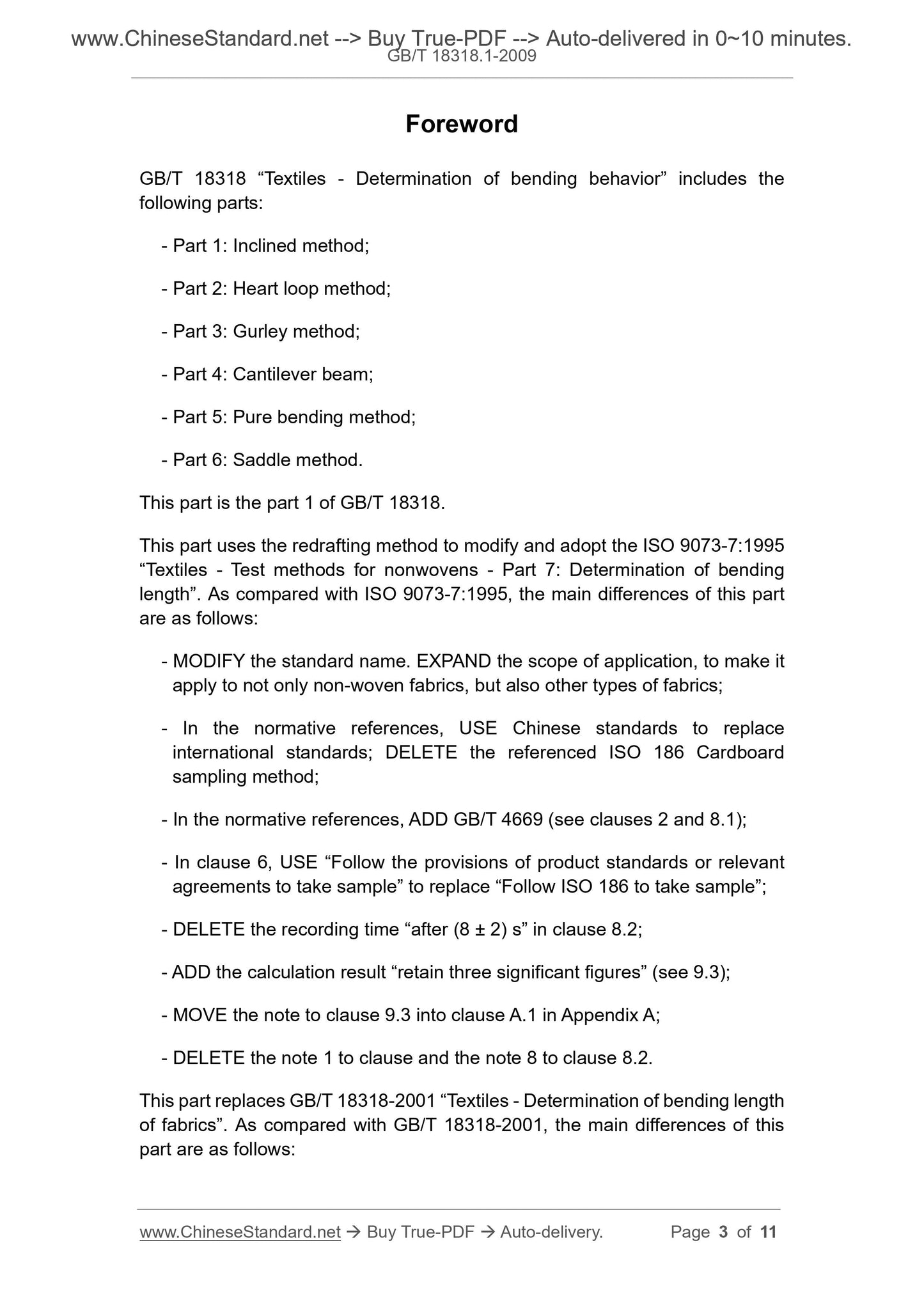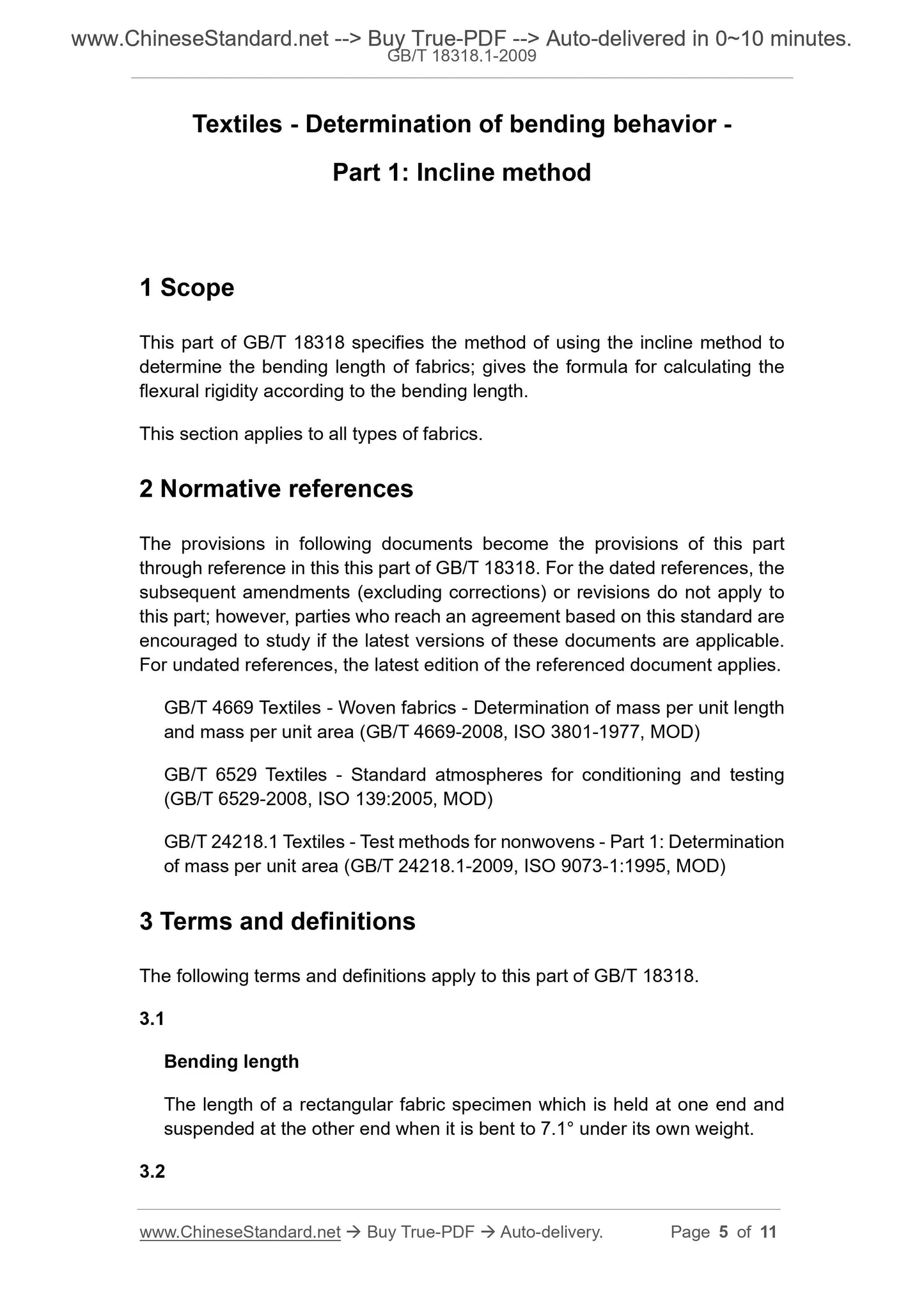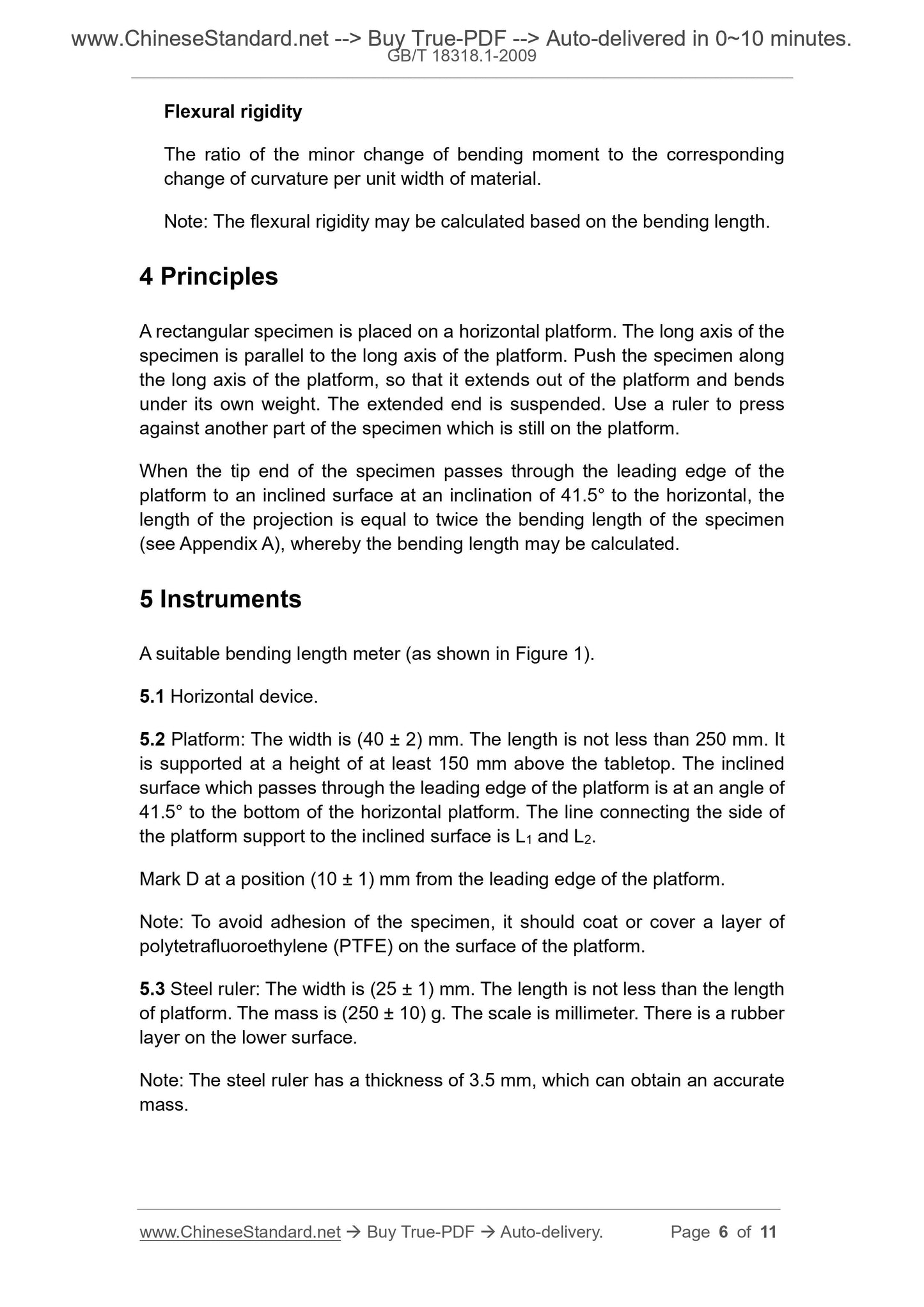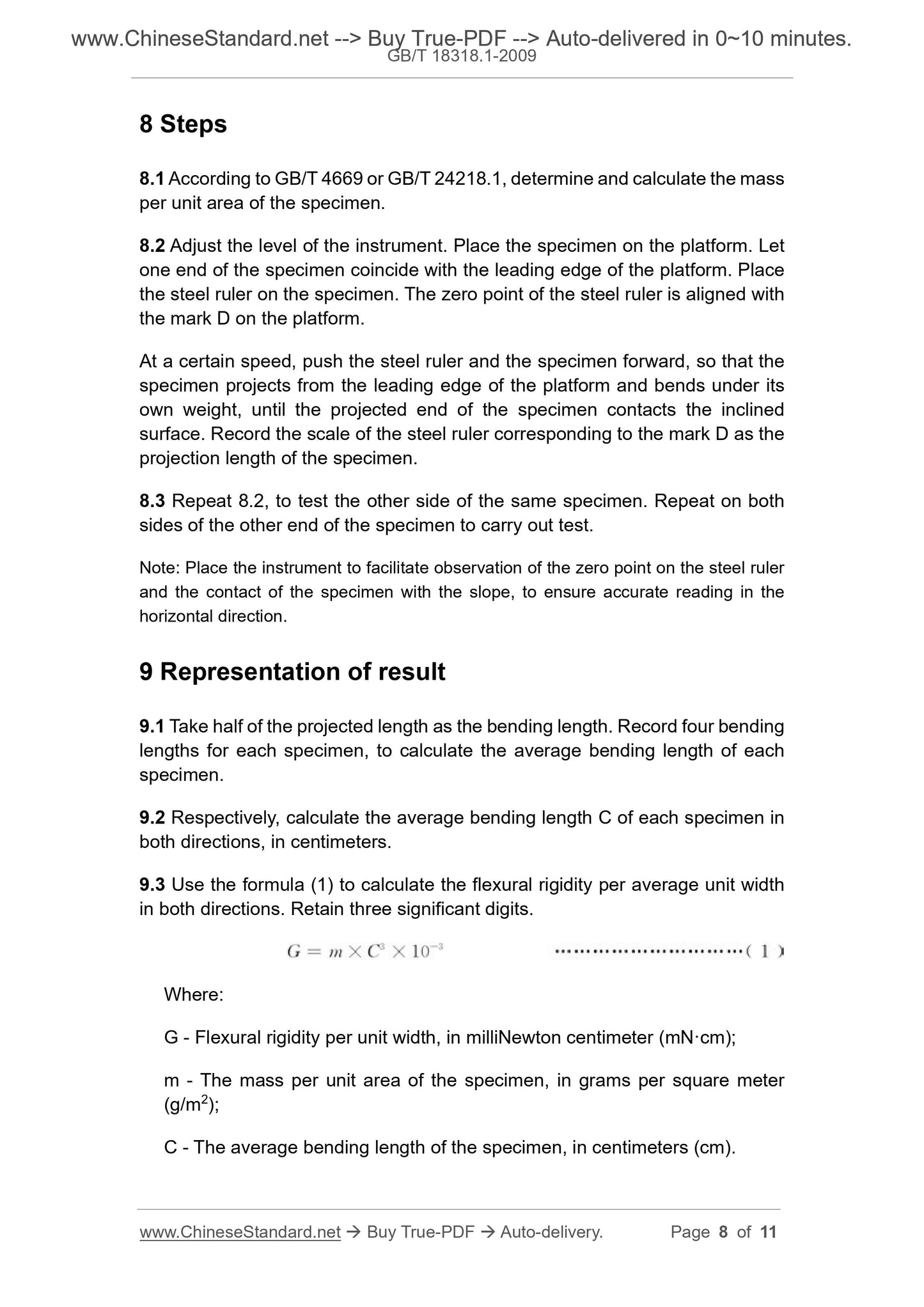1
/
of
6
www.ChineseStandard.us -- Field Test Asia Pte. Ltd.
GB/T 18318.1-2009 English PDF (GB/T18318.1-2009)
GB/T 18318.1-2009 English PDF (GB/T18318.1-2009)
Regular price
$110.00
Regular price
Sale price
$110.00
Unit price
/
per
Shipping calculated at checkout.
Couldn't load pickup availability
GB/T 18318.1-2009: Textiles -- Determination of bending behavior -- Part 1: Incline method
Delivery: 9 seconds. Download (and Email) true-PDF + Invoice.Get Quotation: Click GB/T 18318.1-2009 (Self-service in 1-minute)
Newer / historical versions: GB/T 18318.1-2009
Preview True-PDF
Scope
This part of GB/T 18318 specifies the method of using the incline method todetermine the bending length of fabrics; gives the formula for calculating the
flexural rigidity according to the bending length.
This section applies to all types of fabrics.
Basic Data
| Standard ID | GB/T 18318.1-2009 (GB/T18318.1-2009) |
| Description (Translated English) | Textiles -- Determination of bending behavior -- Part 1: Incline method |
| Sector / Industry | National Standard (Recommended) |
| Classification of Chinese Standard | W04 |
| Classification of International Standard | 59.080.30 |
| Word Count Estimation | 7,765 |
| Date of Issue | 2009-09-30 |
| Date of Implementation | 2010-03-01 |
| Older Standard (superseded by this standard) | GB/T 18318-2001 |
| Quoted Standard | GB/T 4669; GB/T 6529; GB/T 24218.1 |
| Adopted Standard | ISO 9073-7-1995, MOD |
| Regulation (derived from) | National Standard Approval Announcement 2009 No.10 (Total No.150) |
| Issuing agency(ies) | General Administration of Quality Supervision, Inspection and Quarantine of the People's Republic of China, Standardization Administration of the People's Republic of China |
| Summary | This standard specifies the determination of the length of the fabric bending method using the slope method. Gives a formula based on the bending stiffness of anti length. |
Share
